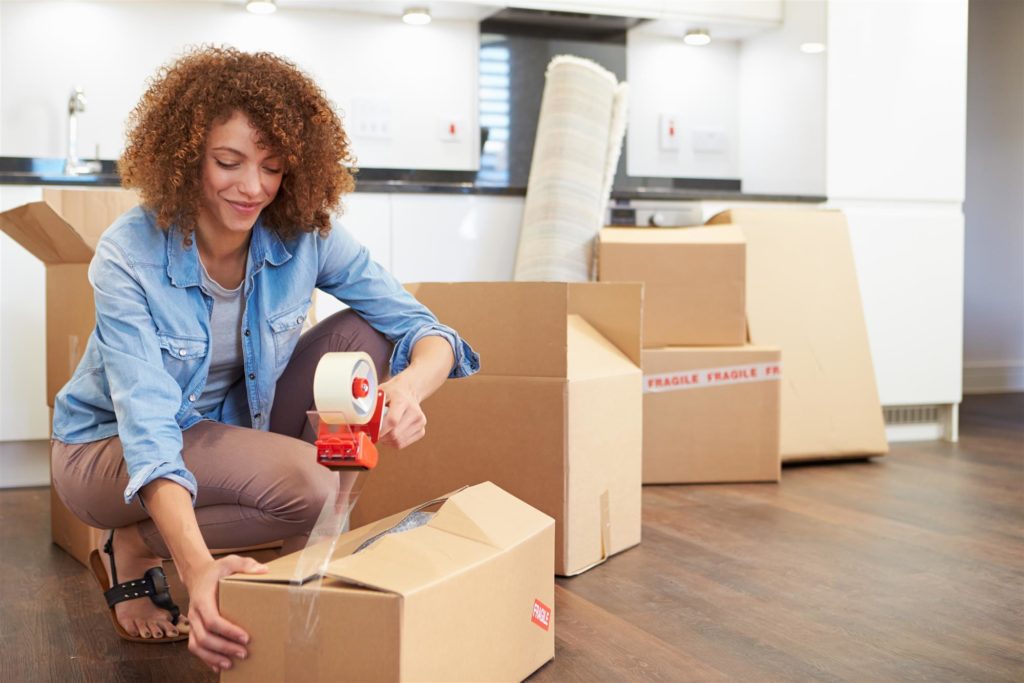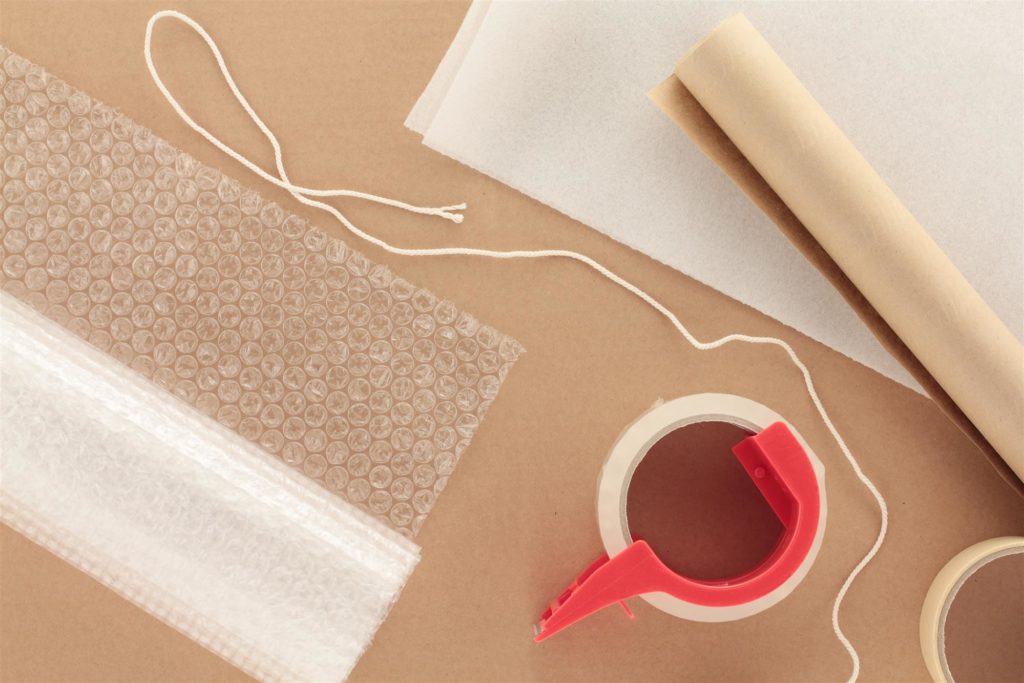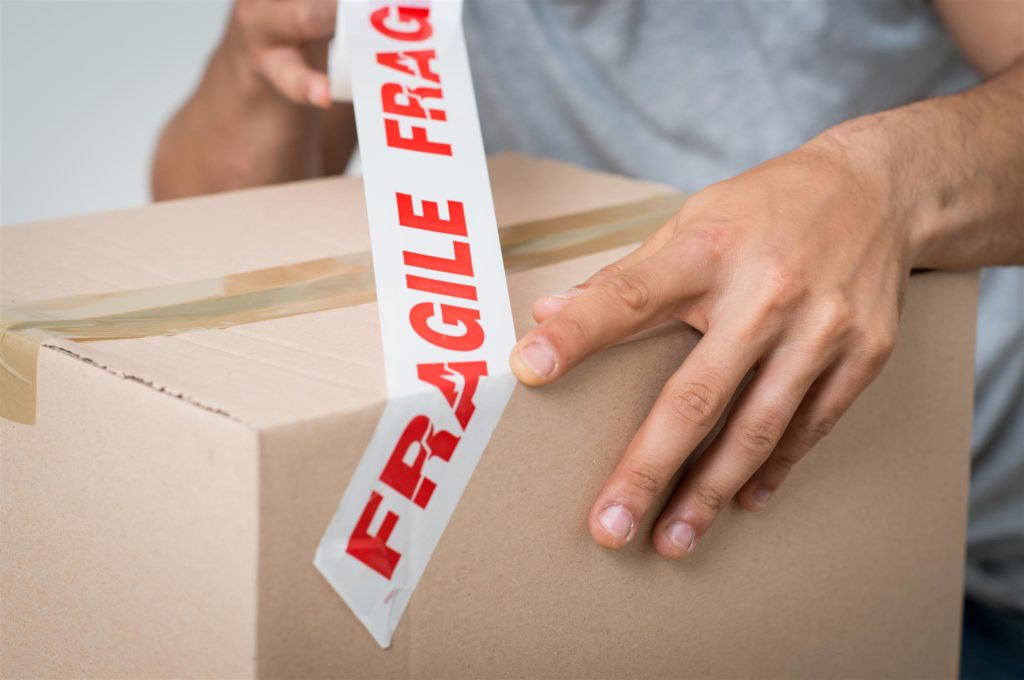Moving? Here’s How to Pack Fragile Items
Home » Latest Blogs: Midway Moving »Whether you’re planning to move to a new home around the corner or one that’s on the other side of the world, your fragile items will need to be packed properly, or they can be put at risk of considerable damage.
Of course, having to pack anything at all can be one of the least enjoyable parts of a move. A general disdain about packing can lead to fragile items being missed or not being packed properly. The truth is that the packing of fragile items is not like packing anything else; it requires a completely different method.

Before You Start Packing
Moving is a great time to rid yourself of those things you don’t need. That being said, it can be a good idea to take an inventory of all of your belongings, including your fragile items. This will require some time to do, but at the end of the process, it will make it easier for you to know which items may not need to accompany you on your move.
The great news is that there are apps available which can help make it easier for you to take inventory of your items prior to moving.
A general guide for deciding what to leave behind is to think about the last time it was used. If it has been one year or more since you used the item, it may not be worth taking with you on a long distance move. Of course, this excludes items which have sentimental value, such as family heirlooms.
Decide How Fragile Items Will Be Packed
Items like bubble wrap are certainly helpful when you’re moving. However, as handy as it is, bubble wrap may not be enough to protect fragile items. For example, some oddly-shaped items may require placement in cardboard boxes. Others may need to be wrapped first in bubble wrap, and then in paper before they can be considered to be safely packed.
Packing Safely
Packing your most fragile items should be done with their and your safety in mind. This means ensuring that the location where they will be packed is clean, stable, and flat. A kitchen table should provide enough stability, for example. In order to pack items properly, you will need paper, bubble wrap, cardboard boxes, and packing tape.

Ensure that any boxes that will be holding fragile items are large enough to carry them, but not so large that they will be awkward or heavy for you or the movers to carry.
Although you will be using bubble wrap, your items should first be wrapped in soft paper. Newsprint is not recommended for this purpose, as the ink can stain your items. Instead, consider moving paper or butcher paper.
Once your item is wrapped in soft paper, carefully wrap it with bubble wrap, securing the wrap with packing tape or string. The exceptions to this rule are items with elongated parts, such as wine glasses. These should have their stems wrapped by commercial movers or yourself in bubble wrap first, and then wrapped with soft paper.
Some fragile items may require the additional step of being rolled in cardboard before they are placed in boxes. To do this, place your item on a flat piece of pliable cardboard. Cut around the item, being sure to leave a perimeter of two or three inches around it.
Once the item has been encased in bubble wrap, simply place it on to the cardboard, rolling it tightly yet gently from one end to the other. Check to make sure your item cannot slip out of the cardboard, then use packing tape and wrap it around the cardboard several times to secure it.
Preparing Boxes for Fragile Items
Your fragile items should not be placed into their boxes without first placing crumpled paper at the bottom of the box. Any kind of paper, including newspaper, will do for this purpose. Doing this will ensure that any shock as the result of bouncing around during moving is absorbed by the paper.
Once you’ve placed your fragile items into the box, place crumpled newsprint around them, if possible, and then on top before closing and sealing the box with packing tape. If you have a limited amount of paper that’s needed to wrap other items, you can pad your boxes with tea towels, rags, or clothing instead.
Packing peanuts are also a great way to pad your breakables boxes. However, they shouldn’t be the only packing material you use, as even the gentlest Chicago movers cannot prevent items packed this way from shifting around inside their boxes.
The goal is to ensure that your breakables are not able to move during transport. That being said, try and ensure that all visible spaces around your items are filled. Ensuring that each breakables box contains sufficient padding is one of the most important things you can do. However, it is only one part of the complete packing process.
Let Others Know Your Items Are Fragile
You may know what fragile items are in which boxes, as well as the process you used to secure them. However, unless you tell others who will be handling your boxes what’s inside, you are risking significant damage. Therefore, you need to ensure your boxes are labeled. Just like the packing of your fragile items, the labeling of your boxes needs to be done properly.

Clear and Simple Text
You don’t need to use any more than three words to bring attention to your fragile items. If you are using boxes purchased specifically for moving, they may already contain labeling. If not, you will need to use a permanent marker in black or red.
Write the word “fragile” or “handle with care” in large letters on the box, on at least two sides. If you wish to attract more attention to the fragility of the contents, you can draw a large arrow in red pointing upward to ensure that it is always being carried the right way.
Writing short words or phrases in large lettering will alert residential movers about the fragility of your items well before they load them into the truck, as they will be able to see the warnings from a distance. Lettering will also come in handy when unloading, alerting movers to take care with how your items are handled and placed at your destination.
General Tips
Never over-pack boxes containing fragile items with excess padding. Not only can this cause damage to the items when you press down the top of the box for sealing with packing tape, but it will also make the boxes curved instead of flat at the tops. Boxes are easiest to stack in a moving truck when their tops are flat.
Another tip is to not over-fill boxes with fragile items. Instead, place only one or two fragile items in a box. Especially old or fragile items should get their own box.
The quality of the boxes you place your fragile items into is also incredibly important. If you still have boxes from your last move stored in your basement, give them a good once-over. Are they as sturdy as they should be? If not, it may be a better idea to get new boxes for your fragile items.
Believe it or not, packing your moving truck will be a lot easier when there are a variety of sizes to be placed in it. In fact, using different sizes can actually ensure far more secure truck packing, as smaller boxes can be placed in spaces between large ones for residential moving to eliminate shifting.
There is a lot of responsibility involved with packing, whether you’re doing it yourself or you have hired a residential mover. When you take the time to inventory your belongings, properly pack fragile items, and clearly label your boxes, you can have peace of mind that your items will arrive at your new home looking just as good as they did when they left your previous home.
Getting ready to move? Call Midway Moving at (800) 300-0002 for more tips on how to move to a new home!

